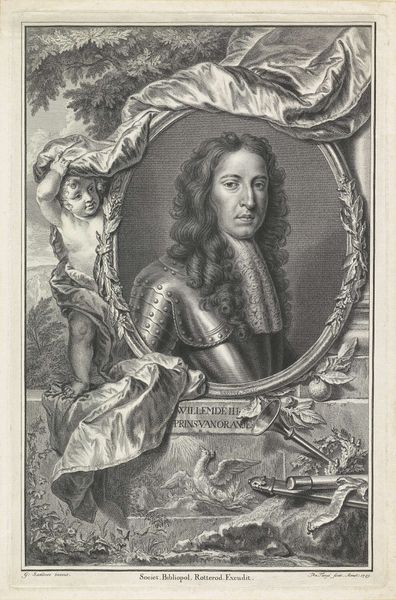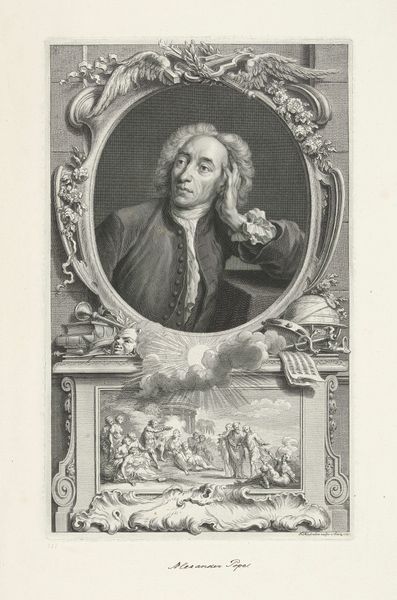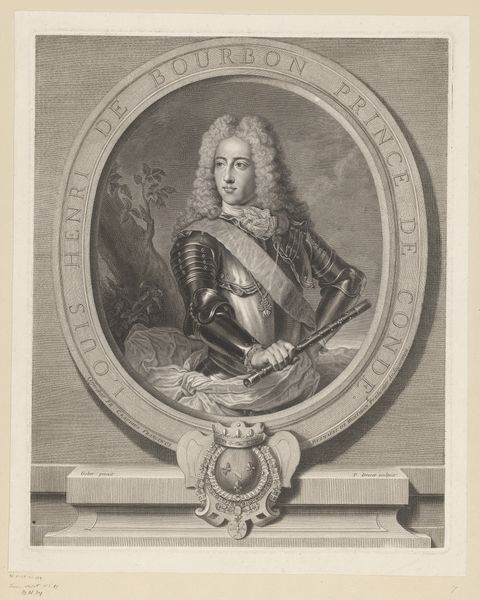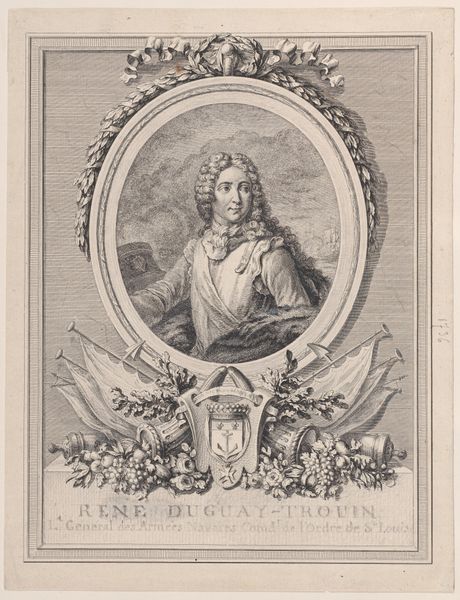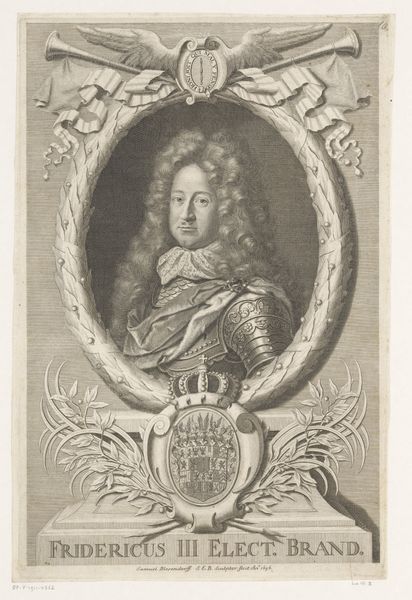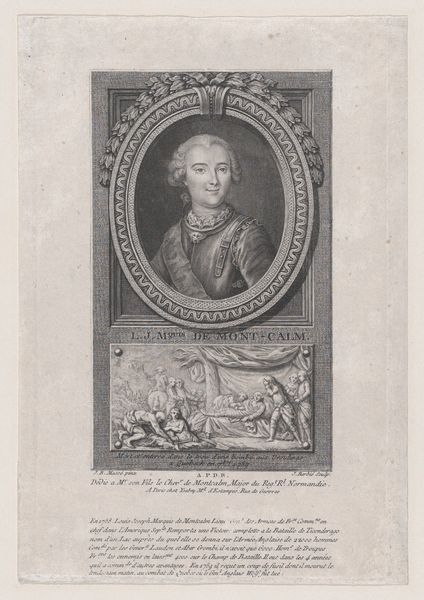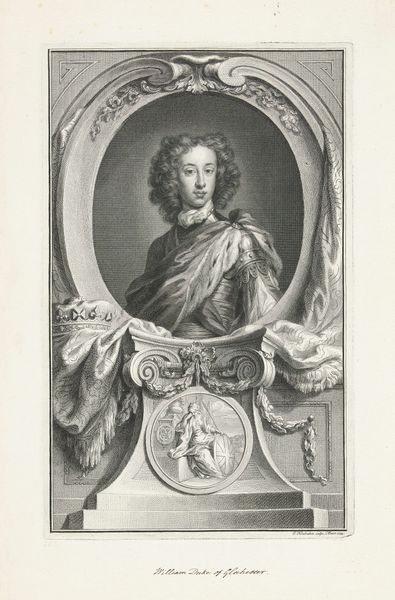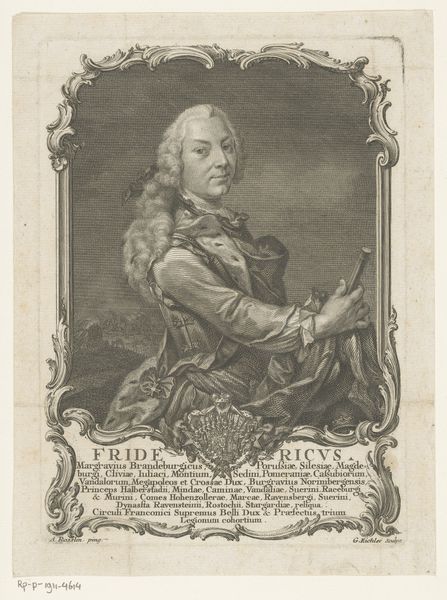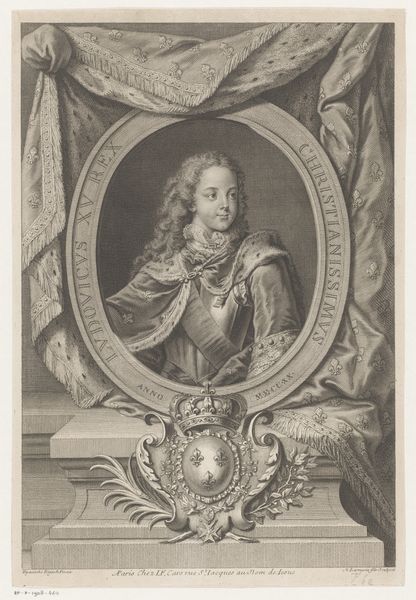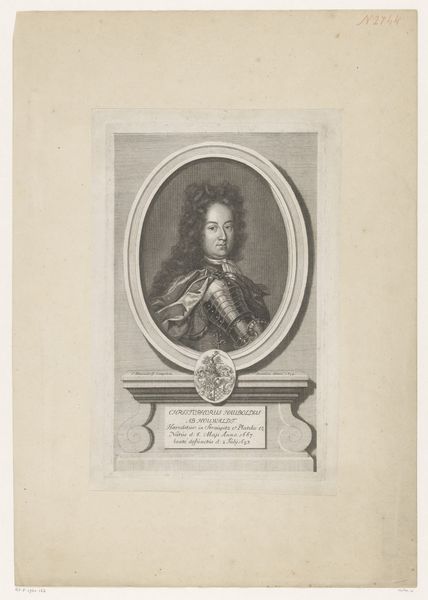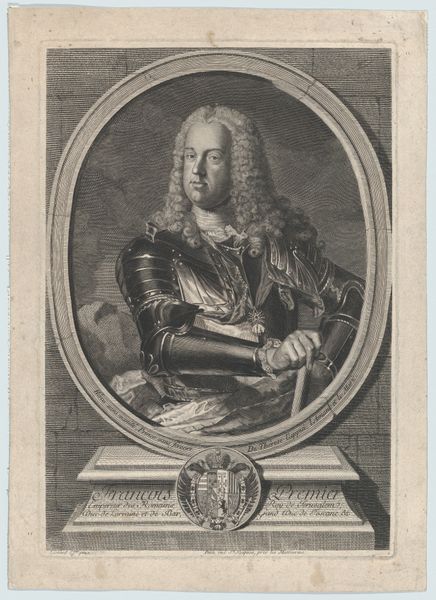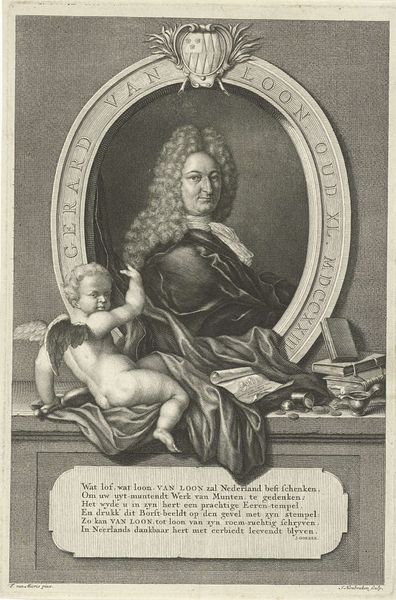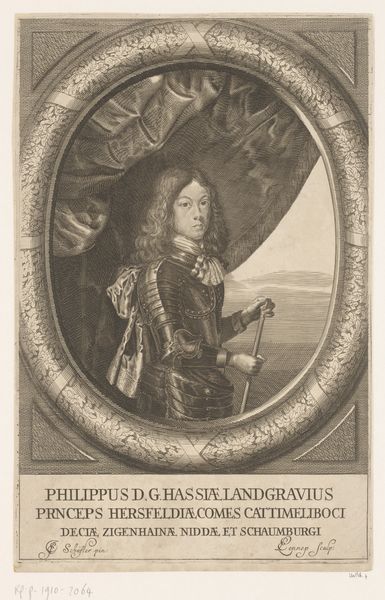
drawing, graphic-art, print, engraving
#
portrait
#
drawing
#
graphic-art
#
baroque
# print
#
old engraving style
#
engraving
Dimensions: sheet: 16 1/4 x 10 15/16 in. (41.3 x 27.8 cm) plate: 14 5/8 x 9 7/16 in. (37.2 x 24 cm)
Copyright: Public Domain
This print of Johan Willem Friso, Prince of Orange-Nassau, was made by Pieter Tanjé, who lived from 1706 to 1761. It is a line engraving, meaning that Tanjé used a tool called a burin to carve lines directly into a metal plate, which was then inked and printed. Consider the amount of labor that went into creating this image. The engraver would have needed extraordinary skill to translate a painted portrait into a convincing likeness in monochrome. Think about the precision and control required to render Friso’s elaborate wig, the details of his armor, and the allegorical scene below, all through a network of fine lines. Engraving was a reproductive medium, a way of disseminating images widely. This print would have served to reinforce Friso’s status and project an image of power. The very act of distributing such prints could be seen as a form of political and economic capital. So, while this print might seem like a straightforward portrait, it's also a testament to the skills of the printmaker and the social function of images in the 18th century.
Comments
No comments
Be the first to comment and join the conversation on the ultimate creative platform.
